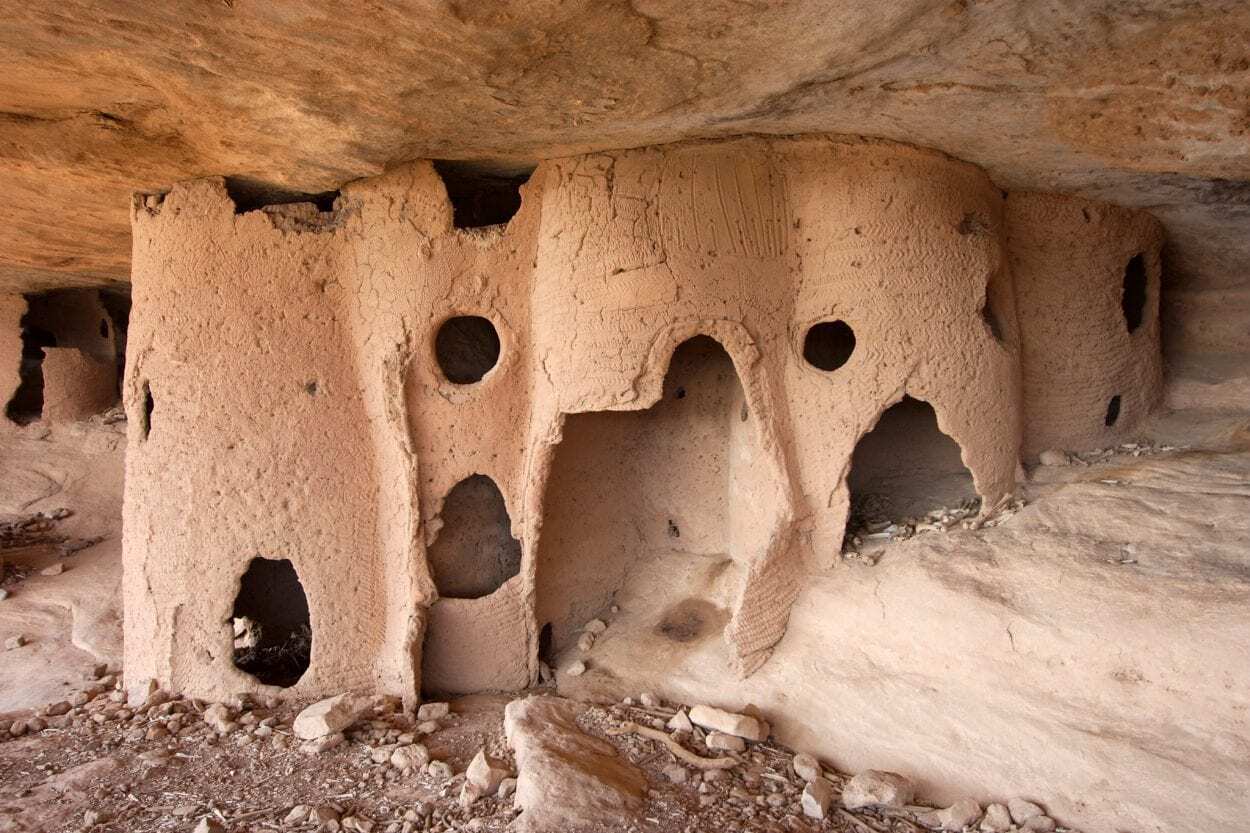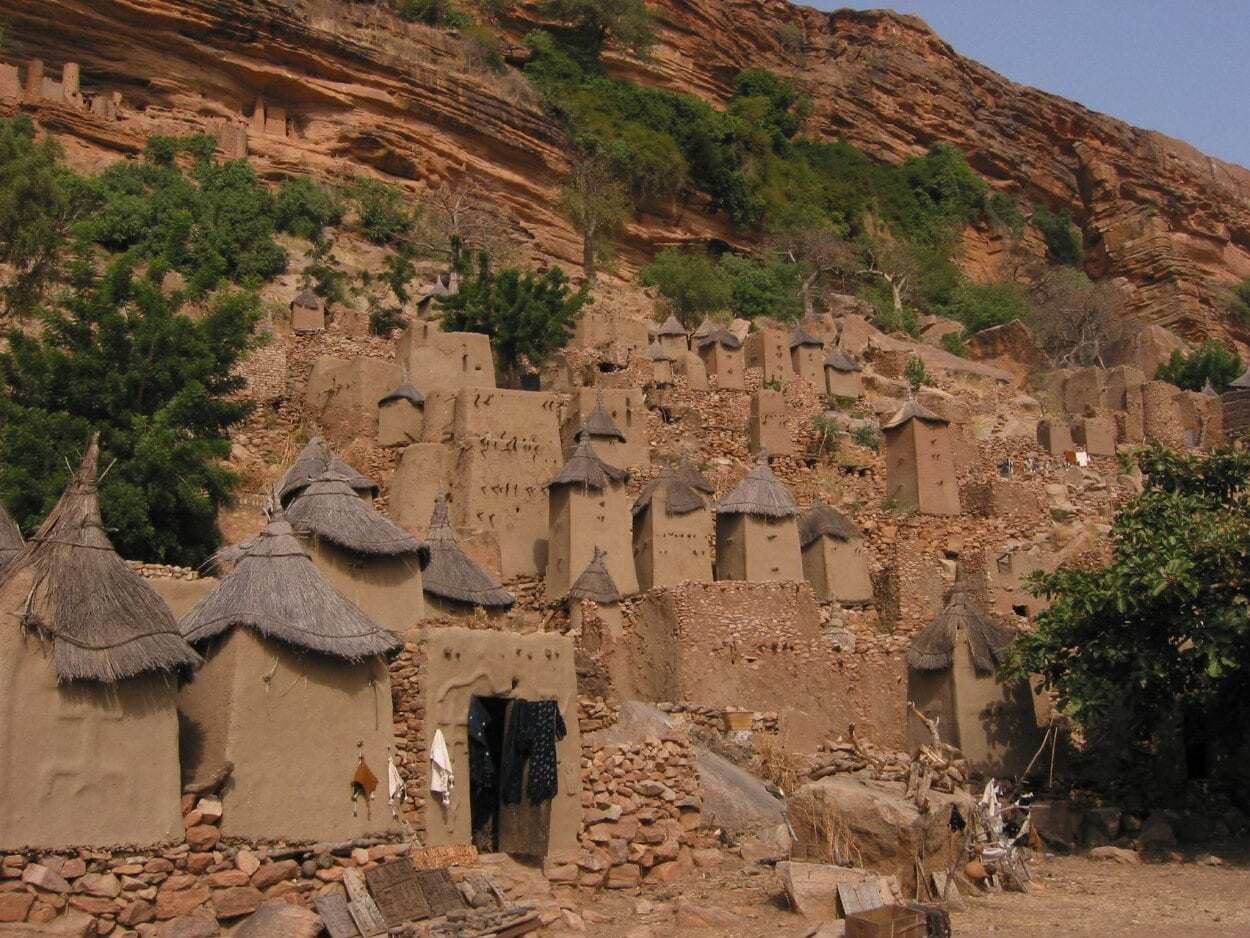The cliffs of Bandiagara is a large geological escarpment rising above the surrounding flatlands in Mali that contains various archaeological sites and 289 ancient settlements.
The cliffs were first settled by the Toloy, an ancient troglodyte culture between the 3rd and 2nd century BC. The Toloy established settlements in the rock face by utilising natural rock shelters to construct circular coiled clay buildings that ran from the cave floor to the ceiling.
The main Toloy site is located at Toloy cave, a 43-metre-long rock shelter that contains around 30 coiled clay buildings used as granaries, that were later converted into tombs.

In the 11th century AD, the cliffs were settled by the Tellem, a Sub Saharan group that built many of the existing dwellings and structures around the base of the escarpment as well as directly into the cliff-face. In contrast to the Toloy, the Tellem built their structures from mud bricks, but also built a honeycomb of adobe granaries using rich ochre-colour mud from termite mounds.
With the arrival of the Dogon in the region, the Tellem were either displaced or intermingled with the Dogon population, although there’s various hypotheses that speculate their disappearance. “Tellem” is actually from the Dogon language and means loosely, “those who were before us” or “We found them”.
Historically, Dogon villages were established in the Bandiagara area in consequence of the Dogon people’s collective refusal to convert to Islam. They utilised the defensible positions of the escarpments and reused many of the Tellem granaries for food storage and burials.
The cliffs and rocky terrain provided excellent protection from slave raiders coming from the desert, but they also isolated communities that resulted in at least 32 local dialects; many of which are now mutually incomprehensible.
Among the Dogon, several oral traditions record their origins with one relating to their coming from Mande in the Cercle of Kati in the Koulikoro Region of south-western Mali. This oral tradition believes that the Dogon first settled in the extreme southwest of the escarpment at Kani-Na where the village of Kani Bonzon is located.

Dogon villages usually contain 44 dwellings, centred around the ‘ginna’, or head man’s house and contain a Tógu nà (a building only for men), a Punulu (a house for menstruating women on the village border), and a male and female granary for storage.
The Dogon still exists today as a distinct ethnic group around Bandiagara and at the foot of the rock shelters, with a population of between 400,000 to 800,000 natives that practices their unique cultural and religious traditions.
Header Image – Tellum Structures – Image Credit : Ferdinand Reus – CC BY-SA 2.0





